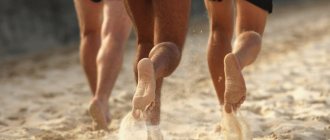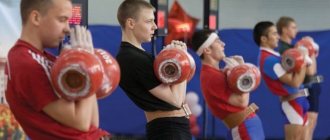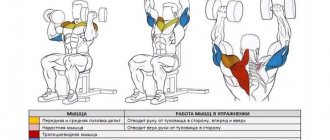Running is more than just a way to have fun. General fitness and running training are investments in yourself that will bring you a variety of dividends: a healthy and happy life, satisfaction when you achieve your goals, and the experience that comes from overcoming mistakes and obstacles on the way to your goal.
Below are some simple tips to help you make and stick to a plan, start running for the first time in your life, or develop better skills that will lead you to an even more successful and enjoyable running career.
So, where does a person who decides to become a runner start? It all starts with a simple desire to achieve a goal. It can be anything - run a marathon, lose weight, improve your well-being, change your life, or even just get off the couch and do something.
This desire is not so easy to realize. What happens to the millions of New Year's resolutions we make? They are safely forgotten after a few hours or days.
A sincere desire should be supported by an action plan to turn it into reality, and the actions should be repeated many times so that they become a habit.
If we talk about cardio, like running and walking activities, then interval running is considered the most effective for losing weight - alternating high, medium and low tempos over a distance. Due to this, the body experiences both high loads on the route, thereby burning calories, and goes through short periods of rest, recovering for a new breakthrough.
Benefits of Interval Running
How does interval running affect human health?
There are several key points here:
- Increased calorie consumption occurs. During such training, the body experiences severe stress, akin to panic, which forces it to produce more energy;
- The athlete gradually accustoms himself to a high, intense pace, increases the load and copes with it;
- Increases endurance and speed over long distances;
- The leg muscles develop and acquire beautiful athletic shapes;
- The amount of subcutaneous fat decreases and is replaced by growing muscle tissue;
- Metabolism accelerates, which leads to rapid cell renewal.
International Master of Sports in Athletics and FSSP CyclON coach Mikhail Kulkov gives the basics of running for beginners as concisely as possible:
What is the anaerobic threshold (AnT)?
Threshold training aims to increase the anaerobic threshold - the rate at which lactate begins to accumulate in the muscles and blood faster than the body can remove it.
Lactate (lactic acid) is a byproduct of carbohydrate metabolism. When walking or running slowly, the lactate concentration in the blood remains low, because body tissues manage to neutralize it. As the speed and intensity of running increases, lactate can no longer be removed and its concentration increases. This boundary, from which lactate is produced faster than it is neutralized, is called the anaerobic threshold. It corresponds to a certain pulse and pace - individual for each person. When running at AnP level, lactate concentration remains high but constant.
What is the practical significance of this abstruse mechanism for a runner? The fact is that it is the anaerobic threshold that is the main factor determining performance at distances of more than 10 km. In fact, this is the maximum pace at which you can run for 1 hour. For a beginner, this will be a pace that allows him to cover about 10 km, for a Kenyan - a half marathon, for the rest - somewhere in the middle.
Knowing your AnP pace, you can choose the optimal competitive pace for different distances. So, for an “average” runner at 10k it will be a little faster than the threshold pace, at a half marathon - a little slower, at a marathon - even slower.
If you start quickly on the same half and run the first few kilometers at a pace noticeably faster than the threshold (see How to run a half marathon with a good result: mistakes of beginners), then you will have to slow down a lot, because There will be an accumulation of lactate (lactic acid) in the muscles and blood, what runners call “acidification.”
In short, the higher your anaerobic threshold, the faster the pace at which you can run in distances that take more than an hour to complete. The good news is that it can be improved with tempo (threshold) training.
Warm up before running
Before going on a training or competition run, it is very important to warm up. Light running or jogging are great ways to get your heart rate up, warm up your muscles, and loosen up your entire body.
Switch from a normal walk to a brisk walk, and then run at an easy pace for 5-10 minutes or about 1.5 kilometers. Next, stop and perform a series of dynamic stretches to prepare your hips, quadriceps, calves, and lower back muscles for the serious demands of running.
Now, in fact, you have already started progressive training, part of which is a warm-up.
general physical training
Required for both beginners and advanced runners. These are workouts for general development, to maintain good physical shape; they involve working out all muscle groups that will be involved in running. For this purpose, general strengthening exercises are used, such as squats, pull-ups, push-ups, and jumping jacks. In general physical training complexes for runners, the emphasis is on the muscles of the legs (hips, legs) and core, as well as on strengthening the feet.
At the same time, there are SBU complexes for runners - special running exercises. Separate training sessions can be built on their basis; For advanced runners, these exercises become part of general physical fitness training or warm-up before a run. SBU also improves general physical fitness, but at the same time helps to form and consolidate the correct running technique. “Elements of running technique in these exercises are performed in an exaggerated manner. So, with a high hip lift, the hip extension turns out to be such that it usually does not happen in running, but this movement helps to form the necessary muscle stereotype in order to adhere to the correct technique during runs,” says the expert.
Other SSUs include running with shin overlapping, heel-to-toe rolls, “deer running” (jumping forward with one leg bent at the knee; the other leg is straight), side steps, running on straight legs.
Interval running program
The program consists of training 3 days a week (1-2 days of rest between each training) and is designed for 3 weeks.
| Stage | Workout progress |
| Warm-up | Brisk walking or light jogging for no more than 10 minutes or a distance of 900-1000 meters |
| Interval running | Alternating intervals: fast and slow running. Option 1: 1 workout: 2 minutes of running and 3 minutes of rest (total 20 minutes); Workout 2: 3 minutes of running and 2 minutes of rest (20 minutes in total); Workout 3: 4 minutes of running and 1 minute of rest (20 minutes in total). Option 2: 400 m - fast run, 400 m - calm run, 400 m - fast run; 600 m - fast run, 400 m - calm run; 400 m - fast run, 400 m - calm run, 400 m - fast run. |
| End of training | Restoration of breathing, transition from running to walking (duration of the stage is 10-15 minutes). |
Walking and light jogging
Running-walking intervals should be used by beginning runners to build strength and endurance before moving on to continuous running.
Short walking intervals will allow you to catch your breath, drink some water, and prepare for the next running interval with a relaxed stride and good form.
Walking and light jogging play a big role in running training and competition. These intervals are an excellent training method for any distance and can be recommended for athletes of any skill level.
Fartlek
Essentially, this is a simplified form of segments. This is originally a Swedish term that translates as “game of speed.” I call this “recess.” There are no strict regulations on the length of segments, the number of repetitions, and this format is not at all picky about the conditions. All you need is the desire to work lightly at a hard intensity.
The point of this exercise is simple. You independently, relying only on your feelings, perform an arbitrary number of accelerations, at any speed, and in the same way decide how much and how to rest after the completed working segment. There are several advantages to this type of training:
- informal approach;
- load adequacy;
- variability of venue.
An additional feature of fartlek is that the training volume is not so small. It’s unlikely that a couple of accelerations of 30 seconds each with a short rest can be called fartlek. Naturally, each runner has his own tasks and capabilities, but usually the total mileage for such a workout is at least a few kilometers.
Tempo/High Speed Running
Based on the training you gain from the easy run/tempo run intervals, you will be able to move on to the tempo run/high speed run intervals.
Here, medium-speed running will alternate with short intervals of high-speed running. These accelerations are designed to develop speed as you build up your pace to overcome fatigue.
This type of training will help you finish strong and also help you achieve speeds you never thought possible. You'll never forget the first time you shift your gearbox into the next gear and accelerate powerfully.
How to determine your threshold tempo (AnT-tempo)?
Laboratory method
The most accurate, but not very widely available method is functional testing using a gas analyzer. A step test is performed, in which the running speed gradually increases, and blood is taken from a finger prick to determine the lactate concentration. The pulse is also measured during the process. As a result, a graph of changes in lactate concentration depending on speed is constructed, from which you can determine what pace and heart rate corresponds to the level of the anaerobic threshold.
Tests using a heart rate monitor
Methods for determining the anaerobic threshold (also known as ANTP) were described in more detail in the article about calculating pulse zones.
It is believed that the anaerobic threshold rate usually corresponds to a heart rate of 83-87% of VO2max or 85-92% of maximum heart rate.
Based on competition results
The least technologically advanced, but quite accurate and at the same time affordable method. You can read more in the article on how to calculate pace for training and competitions. We use VDOT tables: the P-tempo in them will be the threshold.
Hi-Speed/Trail Running
There is no doubt that running at high speed on a flat running surface is beautiful and amazing. But how many running routes are laid out on perfectly flat terrain? You need to build leg strength through short intervals of uphill speed running.
These workouts, which sometimes terrify runners, are called “hill running with repetitions.” Short but effective, they have a high degree of intensity. You run uphill for 20 seconds, followed by an easy recovery run, then repeat the cycle.
Well, if there are no hills nearby, an ordinary staircase will come to the rescue; several ascents to the fifth floor will be an excellent alternative to running uphill.
These workouts will help you become strong and resilient. Intense load on the legs, coupled with high running speed - this is the secret weapon of high-class athletes involved in American and European football, alpine skiing, triathlon and many other sports.
Why shouldn’t you run faster during AnP training, and when to increase the pace?
The main goal when performing AnP training is to run at a pace at which lactate just begins to accumulate slightly. If you do this more slowly, then there will be no training effect in the form of an increase in the anaerobic threshold. But even at a faster pace, the necessary adaptations will not occur, because In the best way, the lactate elimination system trains precisely at the threshold pace or slightly below it - at a fairly high but constant level of lactic acid concentration.
It is especially difficult to resist the temptation to run faster during ANP intervals. However, in this case, the blood lactate level will gradually increase and the training goal will not be achieved. As always, training is most effective at the right pace for a specific goal, not at a faster or slower pace.
It is necessary to increase the training AnP tempo when your form improves: when it becomes noticeably easier to do the same work. It makes sense to do a recount based on the results of recent competitions or tests. You can also increase the VDOT by one unit every 4-6 weeks.
Literature:
- Jack Daniels "From 800 meters to the marathon" (in the English edition of Daniels's Running Formula)
- "Road Running for Serious Runners" by Pete Fitzinger
Useful links (in English):
Your perfect tempo (Runners World)
What is a Tempo Run (Runners Connect)
Tempo Intervals (Runners Connect)










